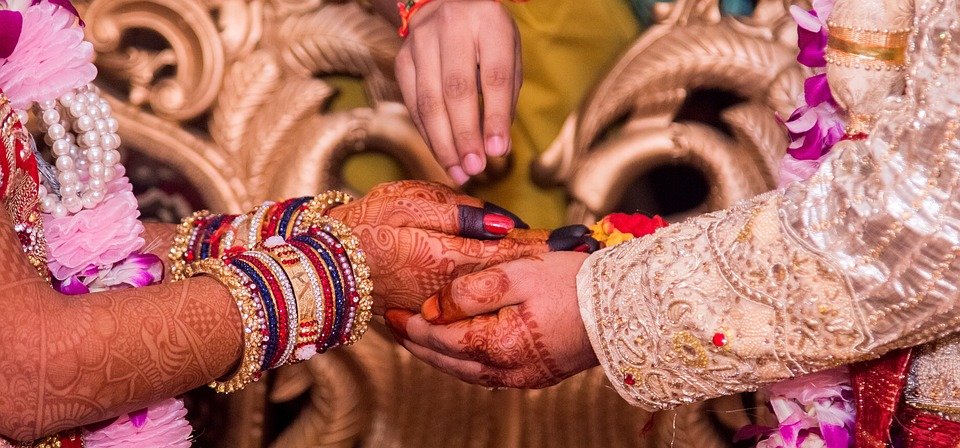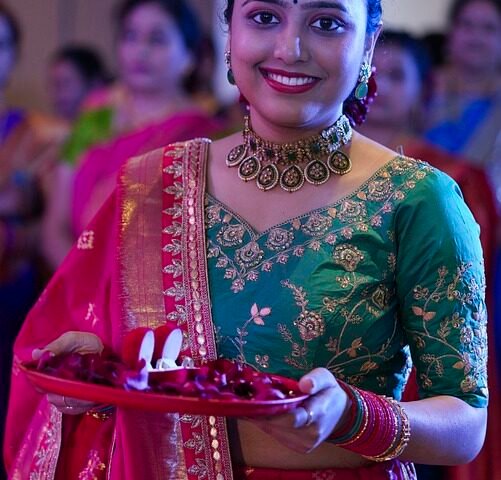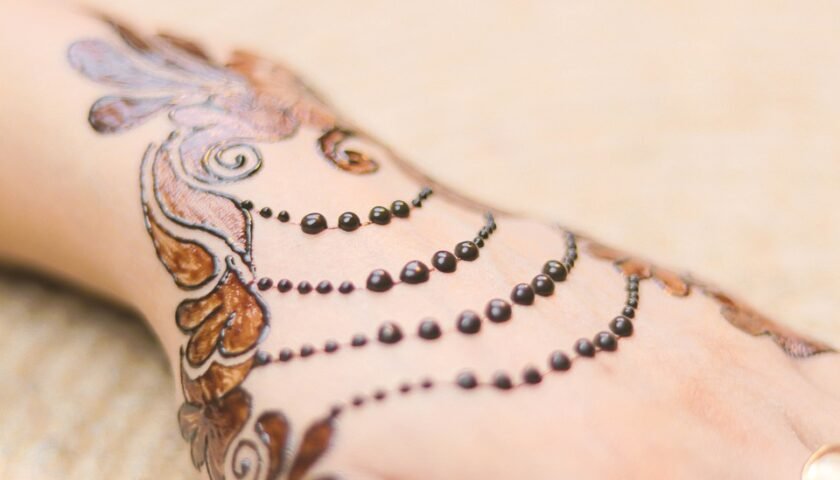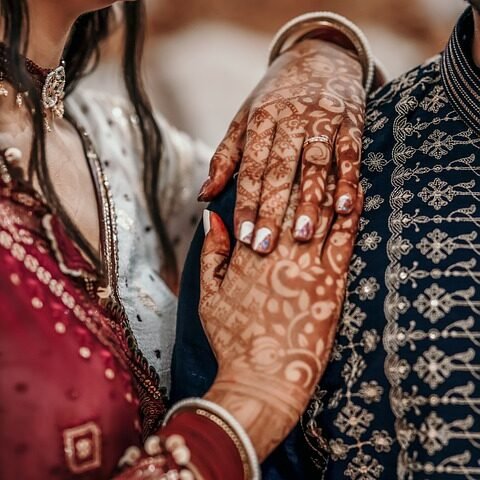[ad_1]
Indian weddings are known for their grandeur and the significance they hold in the lives of the couple and their families. Every aspect of the wedding, from the decorations to the rituals, is carefully planned and holds deep symbolism. One of the most striking and culturally rich aspects of an Indian wedding is the attire worn by the bride and groom, which carries centuries-old symbolism and tradition.
In an Indian wedding, the bride traditionally wears a red or maroon colored lehenga or saree, adorned with exquisite embroidery, intricate patterns, and beautiful embellishments. The color red is considered auspicious and represents fertility, love, and prosperity. It is believed to bring good luck and fortune to the newlyweds. The intricate embroidery on the bride’s outfit symbolizes the bride’s skills in needlework and her ability to create a warm and loving home for her new family.
The jewelry worn by the bride also holds great significance. Traditionally, the bride wears a heavy gold necklace called a mangalsutra, which is a symbol of her marital status. It is tied around her neck by the groom during the wedding ceremony as a sign of their commitment and union. Brides also wear elaborate earrings, bangles, and other pieces of jewelry, which not only enhance their beauty but also symbolize prosperity and wealth.
The groom’s outfit is equally significant and reflects the rich cultural heritage of India. The groom typically wears a sherwani, which is a long coat-like garment, often embroidered with intricate designs. The sherwani is paired with a traditional dhoti or churidar, which are loose-fitting pants. The groom’s attire is usually in a contrasting color to the bride’s outfit, symbolizing the unity of opposites and the complementary nature of marriage.
In addition to the bride and groom, family members and guests also wear traditional attire, which varies depending on the region and culture they belong to. Each outfit has its own symbolism and reflects the unique traditions and customs of that particular community. For example, in a Punjabi wedding, men wear kurta pajamas and women wear a vibrant salwar kameez, while in a Bengali wedding, the groom wears a dhoti kurta and the bride wears a red and white saree.
The significance of Indian wedding outfits goes beyond mere fashion. They carry within them the history, traditions, and cultural heritage of the country. They are a celebration of the rich diversity of India and serve as a symbol of unity and love. Each stitch, color, and design tells a story, making the wedding attire not just a costume but a living tradition.
Indian wedding outfits also have a global appeal and have gained popularity worldwide. Many designers draw inspiration from Indian wedding attire, incorporating elements of the vibrant colors, intricate embroidery, and luxurious fabrics into their own collections. This fusion of traditional and contemporary fashion has made Indian wedding outfits a symbol of elegance and grace.
In conclusion, Indian wedding outfits are much more than just garments. They are a reflection of the rich cultural heritage and traditions of India. The intricate designs, vibrant colors, and luxurious materials not only make the bride and groom look exquisite, but also carry deep symbolism and significance. Unlocking the symbolism and understanding the cultural significance of Indian wedding attire adds an extra layer of beauty and appreciation to these incredible celebrations of love and commitment.
[ad_2]




